
Guests
- Keith LaMarartist, teacher and writer currently serving time on death row in Ohio. He is scheduled for execution in 2027.
- Keegan Stephanlawyer for Keith LaMar.
- Amy Gordiejewdirector of the Justice for Keith LaMar Foundation.
Watch Part 2 of our extended interview with Ohio death row inmate Keith LaMar live from the Ohio State Penitentiary, after the release of The Injustice of Justice, a short film about his story that just won the grand prize for best animated short film at the Golden State Film Festival. LaMar talks about his case, conditions in solitary confinement, and his work with musicians and others to raise awareness about his case as he fights to stop his pending execution scheduled in 2027. We also speak with his lawyer, Keegan Stephan, and Amy Gordiejew, director of the Justice for Keith LaMar Foundation.
Transcript
AMY GOODMAN: This is Democracy Now!, democracynow.org. I’m Amy Goodman.
We continue with Part 2 of our conversation with Keith LaMar live from death row at the supermax Ohio State Penitentiary in Youngstown, Ohio. He’s scheduled to die January 13th, 2027. His self-published memoir is Condemned: The Whole Story. Keith LaMar’s story was recently featured in the award-winning short The Injustice of Justice, illustrated by the world-renowned Molly Crabapple. It just won the grand prize for the best animated short film at the Golden State Film Festival.
As we reported in Part 1, Keith LaMar made history by being the first-ever death row prisoner to call into the premiere as it won this major award, and engage the audience.
Keith LaMar, thank you for staying with us. You’ve served 36 years in prison, 32 years in solitary confinement, 30 of those years on death row. What is it like to live on death row?
KEITH LAMAR: Well, I think the operative word is “lived” on death row. I’ve lived. You know, early on, when I first came here, I met and was mentored by this older gentleman named Snoop. He’s the one who turned me on to jazz. He’s the one who really introduced me to literature, serious books, books that ultimately changed my self-concept.
But this is a soul-crushing environment. You see a lot of young people coming here without the means, the resources to fend off the ills, the ravages of being in this type of place, because sensory deprivation is — it robs you of your humanity. And, you know, before long, you see young guys unraveling. So, then, seeing that, being in proximity to that kind of pain, has been really, really devastating.
But, you know, I share books. I share my understanding and wisdom I’ve accumulated with the young people around me. So, I more or less work for the system, you know, but in a proactive way, trying to help young people in the ways in which I myself was helped. You know, I am in possession of my faculties because other people helped me. And so, I try to extend that help in return, yeah. But it’s a soul-crushing environment, definitely.
AMY GOODMAN: Can you talk about your evolution in prison? You went into prison when you were 19 years old.
KEITH LAMAR: Yeah.
AMY GOODMAN: You hadn’t graduated from high school. Talk about going to school in prison. Talk about every, you know —
KEITH LAMAR: Yeah.
AMY GOODMAN: — what happened to you since.
KEITH LAMAR: Well, I dropped out in the 10th grade. You know, I was still living a hand-to-mouth existence, basically, when the crack epidemic exploded in Cleveland, Ohio, around 1985, '86, when I was around 16 years old or so. I had been living on my own for about a year or so at that time, and I got deeply immersed in the drug trade. And when I came to prison, after tragic events we've already spoken about, I got my GED and enrolled in college.
But that wasn’t really the pivot. You know, the pivot happened when I started my own education, when I — and the first serious book I read was The Autobiography of Malcolm X, and that was a pivot, you know? That was a real eye-opening thing. And I was constantly meeting these real brilliant individuals here in prison. They mentored me, became father figures. I joined a boxing team and met the guy who taught me how to play chess. I met this guy who taught me how to write, you know, the difference between a semicolon and an independent clause. I was learning all these things, things I didn’t learn in school. I learned this from other prisoners. You know, that’s the misconception that a lot of people have about people in prisons, that we’re all animals and all these things. But these are just poor people. And, you know, some of these poor people, when they arrive here, they want to try to understand why they are here. And, you know, I began that quest myself.
And when I came to death row, all those things kind of — because I had just went through this experience of a trial, which was nothing short of a mockery. All the evidence was withheld. Twenty-two thousand pieces of evidence was burned, as I talk about in the movie. All the conflicting statements that challenged the state’s characterization of the facts was suppressed. You know, an all-white jury was impaneled. And during the whole trial, the courtroom remained empty. It was only when it was time to sentence me to death that people showed up. So, the community wasn’t concerned about the evidence. They was just concerned about the day in which they would be able to watch a lynching. And it wasn’t ’til months later, when I was already on death row, that I actually saw those famous lynching pictures that you see in books and whatnot, and I knew it was something that I had just gone through.
And so, that, along with my reading — I started reading James Baldwin, Richard Wright, Charles Mills, [inaudible], Walter Rodney, C. L. R. James. I started reading. All these people became like active professors in my education, my maturation and music. You know, my love for music, for jazz, grew, you know, simultaneously with my love of learning and reading and whatnot. And, you know, I gradually found my way back to myself. I achieved myself. You know, had I taken a deal, you know, I would have died like something of a premature death, you know, because I would have never realized who I am today. And so, I don’t have regrets about making that hard decision, but it was ignorance that allowed me to do it. I didn’t know what I didn’t know about the system, you know, and how it functioned. And, you know, thank God for that, yeah, because I probably would have taken the easy way out and missed the opportunity to find out who I was, yeah.
AMY GOODMAN: I want to bring back Keegan Stephan into this conversation, your lawyer. He’s speaking to us from New York City. You’re on death row in Ohio state. Keegan, if you could explain? When Keith talks about taking the deal the first time, and then the second time saying he wanted to go to trial, explain how that — it’s not him going into prison, where he went right onto death row. It’s after the Lucasville uprising.
KEEGAN STEPHAN: Yeah, that’s right. So, Keith’s original crime of conviction, as everyone heard, was for basically a self-defense killing. When he was selling drugs when he was very young, someone attempted to rob him. He fought back. They shot at him. He shot back. You know, I think most people would deem that a self-defense killing, but under a legal doctrine called “unclean hands,” he couldn’t apply that. His counsel at the time encouraged him to plead guilty, and he did.
And then he was sent to Lucasville at a very unfortunate time, right before this uprising occurred, and then these murders got pinned on him. And then, when he was being tried for those murders, he was offered a plea deal, which is a wild plea deal in retrospect, that he would have been given time that would have run concurrently with the sentence he was already serving for his original crime of conviction. He would have effectively done no more time. I mean, I think that’s a very, very strong signal that they knew they had a weak case, but they just wanted somebody to take the fall. But Keith, you know, stood on his convictions and his innocence and said he wasn’t going to do it. He wasn’t going to admit to murders he hadn’t committed. And that, you know, choice has made all the difference.
He was convicted, despite a trial that was unfair on its face, and then turned out to be even more unfair after all of the suppressed evidence came out. As Keith mentioned, you know, after trial, he learned that other people had admitted to some of the murders that he was convicted of committing. But those confessions weren’t turned over in a usable form. Many other people said, you know, who did the murders and didn’t name Keith. That incredibly exculpatory evidence was not turned over in a usable form. All of that was found and used on appeals, but his convictions were upheld in some very unjust decisions.
Now his only way back into court is through newly discovered evidence and another motion starting in the state court, which is going to take time to litigate, which is what his legal team, including myself, are working on now.
AMY GOODMAN: And, of course, the death date is set for January 13th, 2027. Keegan, can you talk about President Trump’s executive order? I think it was on the first day, on January 20th, where he tried to make sure the attorney general gets execution drugs to the states. In fact, that’s why Keith LaMar’s first execution date was vacated, because Ohio didn’t have the drugs to inject in him.
KEEGAN STEPHAN: Yes, it’s a horrifying executive order. I think it exemplifies that the cruelness is the point to this administration. You know, many drug companies are sort of uncomfortable providing the drugs that are used to effect executions in this country. And for that reason, Ohio has been unable to execute people since Governor DeWine has taken office. You know, they’ve said that they won’t supply it. And then, Governor DeWine has said, if he can’t have those drugs for medically necessary purposes, then he doesn’t want to not be able to get them just to use them for executions.
President Trump’s executive order is encouraging the DOJ to get involved and kind of, like, put pressure on these drug companies to provide drugs in ways that they have said that they ethically do not want to, which is another sort of horrifying use of executive power, to put pressure on private actors to do things they don’t want to do, ethically and morally. It’s horrifying, and it may, in fact, enable Ohio to move forward with executions, which could likely make Keith’s current execution date a very real execution date, which is a absolutely terrifying prospect. I’ve spent time with Keith on death row. He is the most incredible human being I’ve met, living at liberty or incarcerated. He is brilliant and artistic. He’s absolutely innocent, and the state plans to kill him.
AMY GOODMAN: How do you live with this specter, Keith LaMar, over your head, the specter of death, that there is a date for you to die?
KEITH LAMAR: The test to your existence is daunting. I won’t even try to, you know, deny that. You know, but if I focus too much on it, Amy, it will immobilize me. It will stop me or prevent me from doing the things that need to be done. You know, a lot of times when you see guys in my situation, you very rarely hear from them directly. There’s always someone else speaking for them. And sometimes that’s because there’s rules to prevent you from speaking on your behalf. But we filed a lawsuit. And so I’m perfectly within my rights to do what I’m doing, you know, to speak out for my life. And I intend to do that.
You know, just thinking about what you just asked Keegan about, the executive order, and, you know, it’s maddening. It’s maddening when you think about, you know, here’s a person who rants and raves about the injustice of the system when it relates to him personally, and yet you see the overhaul that’s going on where there’s no awareness or connection to his own personal experience. I mean, if he is to believe the system is corrupt, and yet the same person is arming this very corrupt system to take other people’s lives, human beings’ lives, but it’s on par or of a piece with everything else that flows from the system and where we are right now, with the direction that we are moving in right now as a country.
You know, but me personally, you know, I have all these amazing people who are actually fighting with me — not for me, but with me. And for that, I’m really, really — I’m truly grateful. You know, I try not to dwell too much on the execution date, because I don’t want to give it validity, you know, where that becomes a self-fulfilling thing in my life. I want to move in the opposite direction and push against that, you know, in every way possible, yeah.
AMY GOODMAN: I wanted to bring Amy Gordiejew into this conversation. She’s the director of the Justice for Keith LaMar Foundation, speaking to us, I believe, also from Youngstown, but not inside the prison, outside. She’s a high school teacher. Amy, can you talk about what the Justice for Keith LaMar Foundation is and the kind of global outreach that Keith has been able to do from prison with the support, as he said, it, of people working with him?
AMY GORDIEJEW: Thank you so much for having me on, Amy.
Justice for Keith LaMar has evolved. It used to be just a group of friends and supporters here in Ohio, and it was kind of a slogan we had. But in time, as our movement grew, we realized we needed to develop this into something more organized. And so, we are now a 501(c)(3) nonprofit organization. Our mission is to bring healing and support to those who are wrongfully convicted.
And so, as Keith has advocated for himself, it really — for me, I saw a lot of returns after he published his book, Condemned. It just meant that people knew his story and wanted to be, you know, more involved with him, just engaging in their various platforms. And ultimately, the music led us to different continents, all over the world, really. And it’s been really a very, very beautiful, meaningful thing to be able to involve more and more people who hear his story. And again, what Keith said is so true, that he is rare in this area, because so often someone is talked about, and they sit out of reach and out of our earshot. And here’s Keith advocating for himself at every step of the way. So, he really inspires those who join us.
And we’re inviting everybody who’s listening to do so, too. You know, all of this kind of came through a grassroots movement. And so, now, today, you can go on KeithLaMar.org, and you can see his podcast, listen to those, read articles that he has published and that have been written about him. His petition is there. There’s a way to make donations. We are hard, hard at work fighting for him, and it’s a very, very expensive endeavor. So, we welcome that. And again, we are a 501(c)(3). We can provide that support to folks. There is a way to buy merch, like I’m wearing. I often wear that. These are great conversation starters.
And really, our aim there is to help people find a way to connect. I would invite folks to add their name to the email list at the bottom — occasionally, we will send out a newsletter; again, you’ll hear directly from Keith in that — and also to follow our social media pages, which is, all one word, AtJusticeForKeithLaMar on Instagram and Facebook. And that’s where we can kind of have everybody in the queue for when it’s time to make direct calls to the governor in Ohio. All of these things, we’re working in tandem with Keith’s legal team. And the strategy, you know, has to be timely, but we do need people to be bold and to join us and to share his story and to help us grow that movement, so when the time comes, we’re ready and we make a huge impact.
AMY GOODMAN: I want to go back to Keith LaMar, live on death row at the Ohio State Penitentiary in Youngstown, not far from where Amy is right now, who’s about to teach in high school in Youngstown.
Keith, I’m looking at an article in The New York Times from a few years ago, “Jazz Freed Keith LaMar’s Soul. Can It Help Him Get Off Death Row?” And it says, “With concerts and a new album, musicians are trying to draw attention to the case of an inmate, convicted in the death of five other prisoners, who they believe deserves a new trial.” And it talks about your working together with jazz musicians, with some of the greats, like Albert Marquès, who’s the pianist, composer, New York City schoolteacher, people like Brian Jackson, Salim Washington, Arturo O’Farrill, Caroline Davis, who are involved with these Freedom First concerts and the concerts that will lead up to the big event at Joe’s Pub on May 31st, your 56th birthday. What’s it like to make this music together, you with the poetry? I saw the picture in your room. You’ve got a keyboard?
KEITH LAMAR: Yeah, I have a keyboard, you know, and a beginner’s manual on how to play it, which, because all the things you mentioned, I haven’t really had too much time. But it’s aspirational more than anything, to be honest, yeah.
AMY GOODMAN: So, how do you work together?
KEITH LAMAR: But yeah, yeah. Well, same way how I’m working with you right now. You know, I’m sitting here wedged between the toilet and the door. And, you know, it’s a real uncomfortable position. But, you know, I have my eyes closed. I have on a pair of earbuds. And, you know, I just leave it all to the universe, you know, whatever. You know, it’s amazing. I mean, it shouldn’t be possible. I say that in the lyrics, you know, shouldn’t even be doable, the things that we are doing.
You know, Albert Marquès, who you mentioned, had the idea, after exchanging letters with me, that we could probably collaborate in this particular medium to, you know, elevate my story. And I was a little doubtful at first, but, you know, I gave it a try. And as you said, these are world-renowned musicians. These are not just, you know, people who are standing on the sidelines. These are working musicians, you know, people who in their own right are, you know, pretty stellar, stellar people. And to work with them, it was intimidating, to be honest. I went in the studio. Albert Marquès sent me some sketches of a song called “Tell ’Em the Truth.” That was the first song that we recorded. And I was on a video visit here in prison, and we went in the studio, and I was there live. And it was incredibly intimidating. But I talked to O’Farrill’s son, Zack, who was the drummer on the album, he and I. He calmed me down and helped me navigate the stress of the situation. And, you know, as I’ve repeatedly done that over and over again around the country and around the world, I’ve become more accustomed, more welcome into this community of musicians, to the point where I can now consider myself a musician, you know.
And it was all those years of just listening to this music in my cell by myself. John Coltrane, Dexter Gordon, Nina Simone, all the greats, you know, I have them here in my collection. And it was that thing that was bleeding into my system, that Albert Marquès was able to see and help me harness into this beautiful music that we’ve been making. Yeah, I mean, it’s really unbelievable, Amy. It really is.
AMY GOODMAN: Can you talk about your book clubs, students around the country, high school kids, meeting with you to talk about books? Explain how it works.
KEITH LAMAR: Well, the same way I’m talking to you now. I call in, and a group of young people are gathered in the classroom. You know, when I initially started the book club, it was an attempt to pinpoint or go back and see where things went wrong in my own life. When I was 13, I was sent away to a juvenile facility for six months. And, you know, I had all the things that is prevalent with young people like myself. You know, dysfunctional childhood, abuse and all those things were present. But I’m thinking about: What can I do? When was the opportunity for me to intervene and change the trajectory of my life? And although I started reading seriously when I was in my twenties, I thought that maybe if I can get some books back to my 13-year-old self, that maybe I can change the trajectory of that young person’s life. And so I started off going into juvenile facilities here in Ohio, and that ultimately grew into this thing where I was, you know, going into high schools, because I also realized that I was in high school, and I wasn’t learning anything. You know, it’s this thing that Carl Jung talk about, directed thinking and fantasy thinking, that I was absorbed in the fantasy side of it. I wasn’t really — I didn’t really know how to connect the dots. And reading was the thing that allowed me to kind of cultivate that sense. And so I wanted to give that as a gift to young people, to help them navigate the complexities, because life is complicated. And it’s even more complicated when you are poor and disadvantaged, marginalized and all those other things. And reading, particularly autobiographies, you know, is the thing that helped me. And so, I wanted to somehow go back and provide this material to young people.
And, you know, we’ve been — you know, Amy and I have been running the literacy project, I think, for over a decade now. And people send in books and donate books, and we’ve been able to — we just donated a 150-book library to the Youngstown juvenile facility here in Ohio. And so, that’s what we’ve been doing. That’s part of the work. It’s not just about, you know, myself and trying to free myself from this trap, because I was actually stuck when I was 13. And, you know, so my hope and goal is to be able to effect change in other young people’s lives, you know, yeah. So that’s the whole, you know, drive behind the literacy project.
AMY GOODMAN: Keith LaMar, if you can talk about what it was like to give the graduation address at the ICE High School in New York? That’s the Institute for Collaborative Education.
KEITH LAMAR: Well, it was a privilege. It was an honor, you know, because, obviously, you know, because of where I am, you don’t expect to be able to be given those opportunities. David Riker, who I know you know, his daughter Maria was in my book club. And there were several other kids in my book clubs who would be graduating, with whom I had a very, very close relationship with. And I wanted to somehow summarize the exchange that we had, to put it in words, to let them know how much I believed in them, to let them know how much I expected from them, but to also kind of warn them that the world that you are about to enter into is the real world, you know. And all the things that we have examined —
PHONE SERVICE: You have one minute remaining.
KEITH LAMAR: All the different things we examined about what it means to be alive, it was time for them to put that in practice. So, that’s what I wanted to say in my speech. And it was just a real humbling thing to be able to send them off into the world with that message. And so, yeah, it was one of the highlights of my life. I can honestly say that.
AMY GOODMAN: Keith, you heard you have like 30 seconds to go. That’s the message from the prison.
KEITH LAMAR: Well, let me use these 30 seconds to thank you, Amy Goodman. When I say that you have been a big part of my life, I mean that literally. You have been a professor, a tour guide. You have been my connection to my humanity. And I love you. I mean that from the bottom of my heart, Amy. I love you so much. Thanks so much for helping me. I love you.
AMY GOODMAN: Well, Keith, thank you very much for spending this time with us, live from death row, from the Ohio State Prison in Youngstown, Ohio.
PHONE SERVICE: Thank you for using GTL.
AMY GOODMAN: That’s what he hears a lot when he’s on the phone. The Freedom First series, Amy, if you could end by telling us about where he’s going to be, it’s strange to say, appearing, but where Keith LaMar can be heard from death row — Northwestern, Rhodes College, Tufts, the Scripps campus, UCLA and, finally, here in New York — how it works?
AMY GORDIEJEW: Sure. Well, as Keith was just explaining, so many of the kids from his high school book clubs at ICE in New York City have graduated and gone on to different colleges around the country, inspired to become advocates and to really organize and change the world in lots of ways — not just for him; for Gaza, for all kinds of human rights issues. And so, we will be going to Rhodes College. One of his students, Coral, is organizing a concert there. We’ll be there in April. We’ll be back to the 5C colleges. Layla and Maria Riker, our former students and great collaborators in support of Keith, they’re bringing us to — we’ll be doing two concerts, April 17 and 18, at Scripps College. One of those nights will be devoted to poetry, because, as you know, we all know, have heard, Keith is quite a poet. We’ll be going up to Tufts in April, as well. Another student, Ilan, is bringing us there. We’ll be back at Northwestern University in March.
So, we’re kind of moving and moving all around. So often it is the young people whose lives Keith has touched who are going on and advocating for him. So, we’re busy. There’ll be some concerts happening. The ECPM is bringing us to Paris in October. They are the organization that hosts the World Congress Against the Death Penalty, and they do so much international support for people in very oppressive countries suffering terrible death row situations. So they’re going to be bringing us there. I’m probably forgetting something, but there will be some concerts in Spain, where Albert is. He’s Catalan, so quite often we perform there. So, and more to come.
AMY GOODMAN: You’re talking about the jazz musician Albert Marquès.
AMY GORDIEJEW: Right, exactly. They are — they’re band partners, I would say, musical collaborators. And it’s been a beautiful journey. He and Keith are always the fixtures in these shows, and then we have rotated about 80 to 90 different musicians around the world into the shows to perform with us. So, it’s been beautiful. It’s really something spectacular.
AMY GOODMAN: Well, I want to thank you all for being with us. We’ve lost Keith to the timed phone of the prison, but, first and foremost, to Keith LaMar, joining us from death row at Ohio State Penitentiary in Youngstown. And I want to thank Amy Gordiejew, who is the head of the Justice for Keith LaMar Foundation. And I want to thank Keith’s lawyer, Keegan Stephan, joining us from New York City. To see Part 1 of our conversation with Keith LaMar, you can go to democracynow.org. I’m Amy Goodman. Thanks so much for joining us.
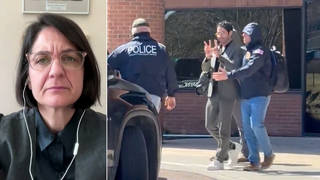
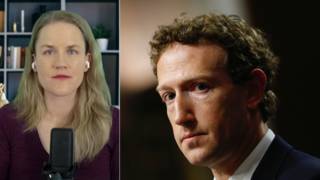
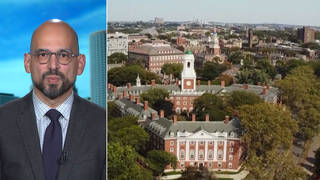
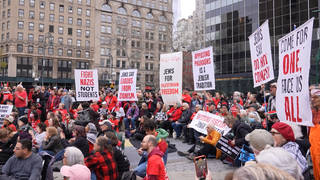
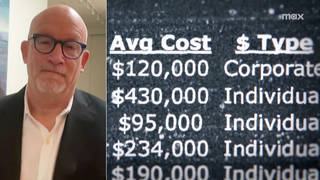
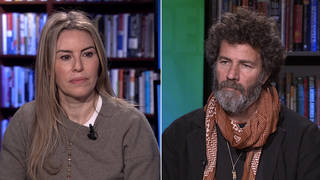
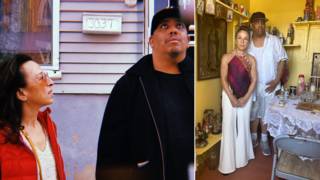
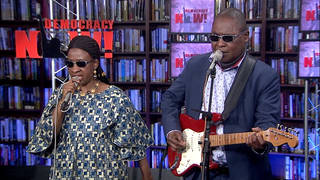
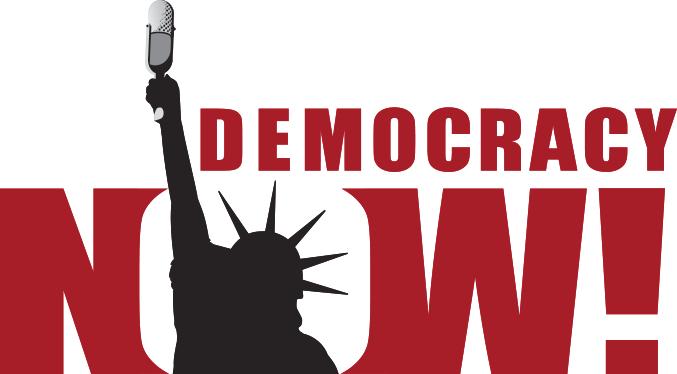
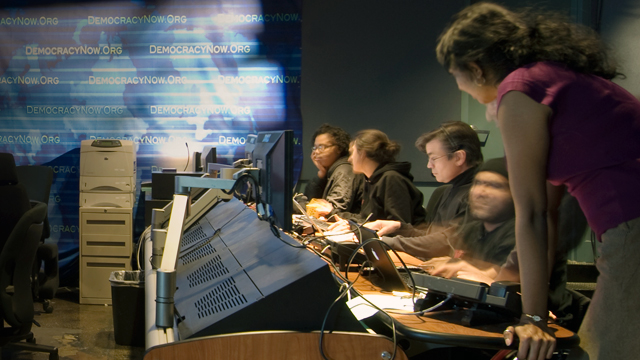
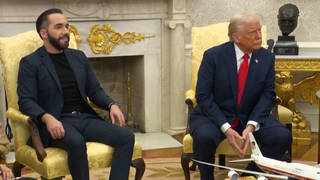
Media Options